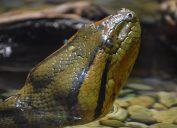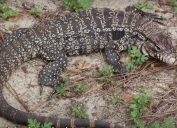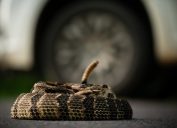Giant Cicada-Killing Wasps Will Descend This Summer—Here's Where
The flying insects will reappear to hunt the infamous swarming cicadas.

The return of summer signals the return of warmer weather and outdoor activities that make the season so enjoyable. However, it also means that certain animals and bugs will also take advantage of the more comfortable conditions. And this summer, giant cicada-killing wasps are expected to descend on parts of the U.S. as they begin hunting. Read on to learn which locations will be affected and other important information about this unique species.
RELATED: Officials Issue New Warning Amid Sudden Surge in Snake Bites—Record Year Predicted.
A rare double brood of cicadas will emerge next month.
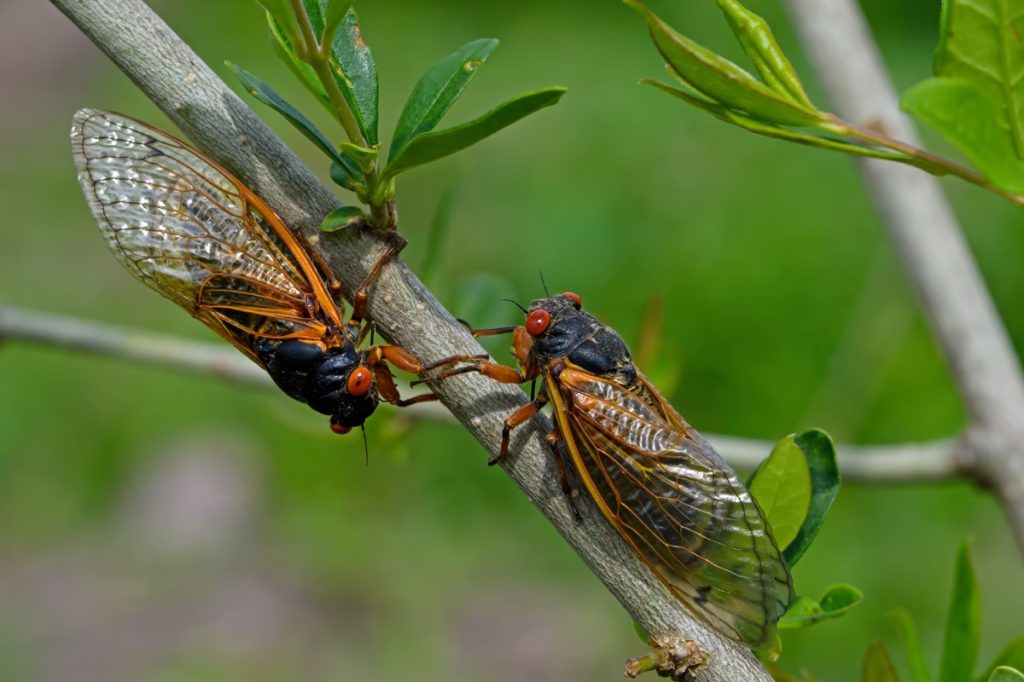
For many, the droning buzz of a cicada is synonymous with warm weather. But this year, some places are expected to get a lot more of the insects than usual as a double brood hatches in what some experts are calling a "cicada apocalypse."
Beginning next month, Brood XIII will emerge for the first time since 2007 alongside Brood XIX's first appearance since 2011. Altogether, these two larger swarms will appear in at least 16 states across the Midwest, Southeast, and East Coast, in addition to the annual hatchling, per Cicada Mania.
Experts recently shifted their forecast, now saying that the bugs are expected to show up in late April instead of May or June as previously expected. They'll likely appear first in southern states, including northern Louisiana, northern Mississippi, northern Alabama, and Georgia, Gene Kritsky, PhD, a professor emeritus of biology at Mount Saint Joseph University, told People.
RELATED: Cicada "Double Brood" Will Descend on These 16 States Next Month.
Giant Cicada Killer wasps will also emerge to hunt their favorite prey.
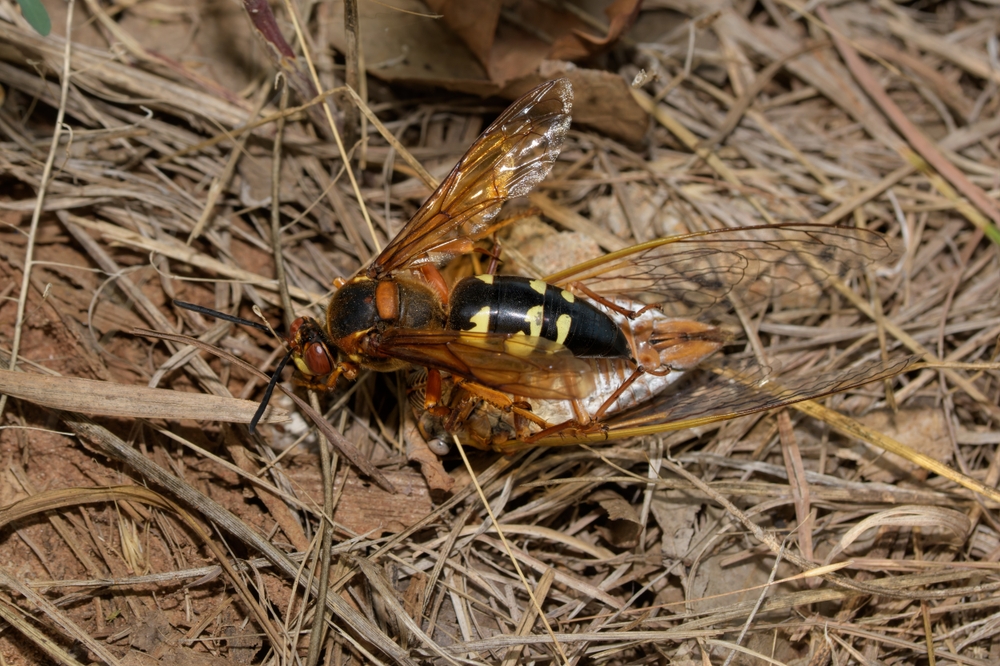
Despite their overwhelming numbers, cicadas still play an essential part in the food chain by attracting predators that feast on the sudden bug buffet. This includes the Eastern Cicada Killer (Sphecius speciosus), a giant wasp that lives to do exactly what its name suggests.
According to the University of Illinois Extension, the flying insects can grow up to 1.5 inches in length and have a black thorax wrapped in three yellow bands. Only females have a stinger, which they use to paralyze cicadas before dragging them back to long burrows that they typically dig beneath trees swarming with their prey. It's there that the cicadas meet a grim fate.
"One or more are placed in a burrow that the wasp creates, preferring bare soil areas," Frank Meek, a technical services manager for pest control company Orkin, told local Chicago NBC affiliate WMAQ. "An egg is laid on the live paralyzed cicada(s) which hatches into a wasp larva. The larva then consumes the live insects and overwinters."
RELATED: Brand New 21-Foot Snake Discovered: "Biggest of All Anacondas."
The wasps will likely show up more than a month after the earliest broods begin appearing.
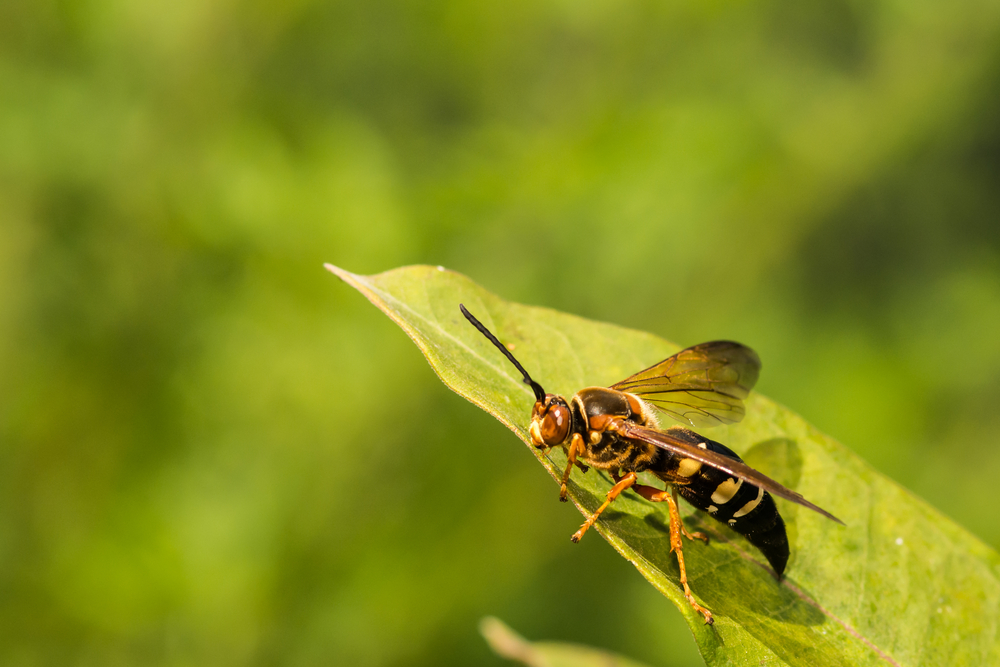
Even though the historically large double brood will begin popping up well before summer, it's unlikely you'll see any Eastern Cicada Killer wasps that early. They typically hatch each year in late June or July and have a broad habitat that runs everywhere east of the Rocky Mountains in the U.S. wherever cicadas are found, according to the Smithsonian Institution.
But despite being skilled hunters, it's unlikely that the wasps will help lessen the impact of the double brood.
"By that time, the periodical cicadas have died," Kritsky told WMAQ. "It is possible a very late periodical cicada could be taken by an early cicada killer wasps, but the two normally coincide together. Therefore the wasps will not have an effect on the periodical cicadas."
RELATED: 4 Soaps and Scents That Repel Mosquitoes, Experts Say.
Eastern Cicada Killers can still create problems.
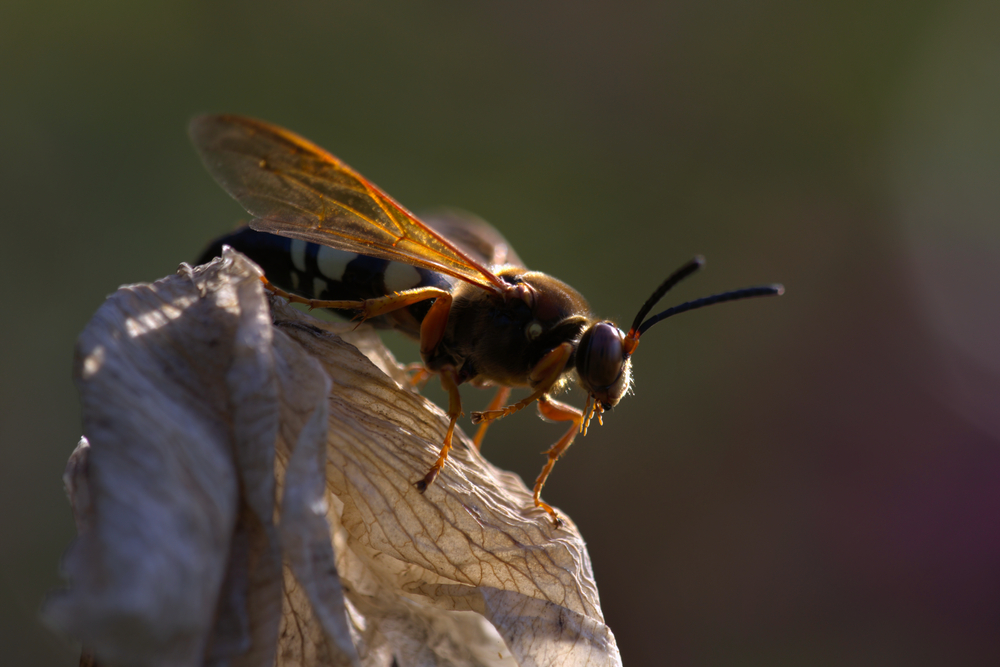
As solitary wasps, Eastern Cicada Killers live in burrows typically dug into embankments near sidewalks, roads, and lawns with loose soil. However, this activity can also become a problem if too many are present, earning the wasps a designation as a "minor pest," per the Smithsonian Institution.
Despite their sometimes bothersome burrowing, the wasps are still a vital part of the food chain. They're also described as relatively "mild-mannered," making the stinger-equipped females less likely to cause a painful run-in, according to the University of Illinois Extension.
"If stepped on or swatted at, they may sting in defense," Meek told WMAQ.
If you notice the flying insects beginning to burrow in your yard, you can discourage them from getting comfortable by reducing the amount of dry or loose sandy soil, per the University of Illinois Extension. You can also douse these areas with water to drive them off.



